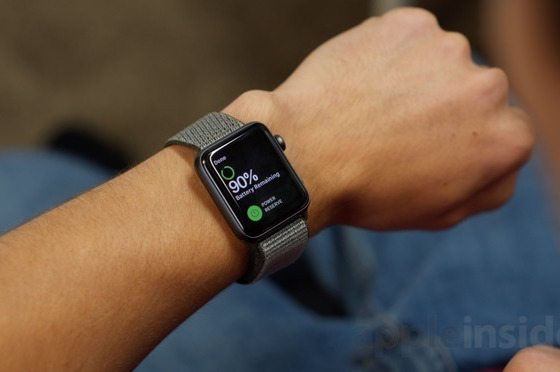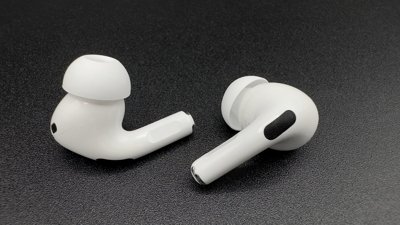Participants in the John Hancock Vitality program who were given Apple Watches for $25 showed greater physical activity compared to users without one, with dramatic increases in "high-intensity activity days" across the board.
A study by the RAND Corporation of 400,000 people across the US, Europe and South Africa found that incentives including subsidised Apple Watches significantly improved people's activity. In the research conducted for financial and life insurance firm John Hancock, participants with a watch on average increased their number of active days by 31 percent on the company's Vitality program.
They also increased what the study calls high-intensity activity days by 52 percent. The most inactive participants in the US with the highest average body mass index increased their physical activity by 200 percent. Brooks Tingle, John Hancock Insurance President and CEO said that the Apple Watch program is "helping our customers live healthier lives."
Since 2016, the insurer has been offering customers Apple Watches which cost them $25 if they achieve certain physical activity goals. On the publication of this study, John Hancock Insurance is updating the offer to feature Apple Watch Series 4.
"The RAND research proves [that] the experience of our customers to date will have long-term impact," said Marianne Harrison, joint CEO of John Hancock. "People can successfully take small, everyday steps to improve their overall health."
Separately from the RAND Corporation research, the insurer earlier this year began moving all customers to policies that feature Vitality incentives such as the Apple Watch.
Similarly, insurance firm UnitedHealthcare is now offering a free Apple Watch Series 3 to customers who achieve daily fitness goals for six months.
Keep up with AppleInsider by downloading the AppleInsider app for iOS, and follow us on YouTube, Twitter @appleinsider and Facebook for live, late-breaking coverage. You can also check out our official Instagram account for exclusive photos.
 William Gallagher
William Gallagher


-xl-(1)-xl-xl-m.jpg)





-m.jpg)






 Wesley Hilliard
Wesley Hilliard
 Marko Zivkovic
Marko Zivkovic
 Andrew Orr
Andrew Orr
 Malcolm Owen
Malcolm Owen


 Andrew O'Hara
Andrew O'Hara







11 Comments
There's really two sides to this story:
Yes, the Apple Watch certainly encourages consistent activity and exercise. It's really very good at that.
But, another aspect is that it enables healthcare providers, insurers, researchers and employers to get an accurate, objective and timely view into what you are doing (or not doing!)... While that information could obviously be misused, it also offers a potential revolution in healthcare -- shifting from a passive disease management model ("Take this pill ....") to one supporting and training people to live healthy lifestyles.
We spend $3 Trillion a year on health care. And, it's estimated that 75% of that goes to treat chronic diseases -- 75% of which could have been prevented or delayed with a healthy lifestyle. Basically that means that about half our $3 Trillion a year goes to treat coach potatoes sitting around eating pizza.
I agree with these findings based on experience.
When Apple Watch came, I thought what was the point? Then my boss gave a Series 2 to everyone in the company (small company) for Christmas (this was the year series 2 came out). While I was already pretty active, but I found myself striving to do all of Apple's Challenges. I liked it enough to upgrade to series 4. Apple was smart to make Health the focus. Separate health wearables will go the way of standalone GPS (the ones not built into cars) soon
If I got an Apple Watch for $25 I'd be jumping for joy too.
If these results are reliable, health and life insurance companies can earn larger profits if their clients/patients use Apple Watch. On that basis alone, Warren Buffett’s several insurance companies should promote the use of Apple Watch.